
| ‘Sales Report’ |
The report that summarizes all sales completed by your business as follows:
|
| ‘Expenses Report’ |
The expense report summarizes all the expenses incurred by your business as follows:
|

| ‘Sales Report’ |
The report that summarizes all sales completed by your business as follows:
|
| ‘Expenses Report’ |
The expense report summarizes all the expenses incurred by your business as follows:
|

| ‘Customers’ |
Allows users to register customers. This is important for statistical purposes and when registering returning customers. The process is as follows:
|
| ‘Vendors’ |
This feature allows the user to register a vendor where the business frequently gets goods or services from. It works as follows:
|
| ‘Products’ |
This process allows to register any products or services business either buys or sells. The process if as follows:
|

| ‘Buy Supplies’ |
A place where you can purchase supplied for your business as follows:
|
| ‘Expenses’ |
A place where you record any business-related expenses as follows:
|

| ‘Point of Sale’ |
|
| ‘Invoices’ |
|
| ‘Transactions’ |
|

| ‘Sell’ screen |
The ‘sell’ screen is used for any sales. You can sell both goods (physical products) or services. ‘Sell’ screen has the following functionality:
|
| ‘Buy’ screen |
The ‘buy’ screen is used for any purchase. You can purchase both goods (physical products) or services (such as telephone credit). Goods you buy can be sold at a profit or used in your company. ‘Buy’ screen has the following functionality:
|
| ‘Manage’ screen |
The ‘manage’ screen is used for registration of your customers, vendors, and products. The ‘manage’ screen has the following functionality:
|
| ‘Reports’ screen |
‘Reports’ screen is used to have detailed reports of sales and expenses. The ‘reports’ screen contains the following functionality:
|
| Menu button | Where you can update password, login/logout, purchase subscription, and download this manual in PDF format. |
Users can easily take some normal settings related language and login information in App.
|
Step 1 – Go Settings |
Step 2 – Choose Language |
|
 |
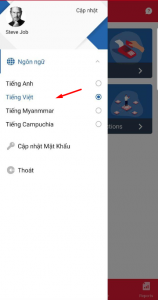 |
|
|
Step 1 – Go Settings |
Step 2 – Update new password |
Step 3 – Confirm |
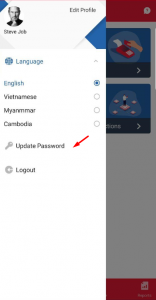 |
 |
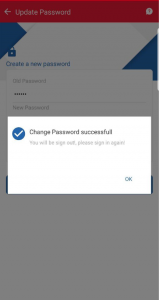 |
We support 4 types of reports: Sales, Expenses, Bills, Cash flow
Sales, Expenses, and Bills reports have the same format with time range : Daily, Weekly, Monthly, Quarterly. Data is automatically updated when user uses the App.
| Reports | Sales report | Expenses report |
 |
 |
 |
Cash Flow report will provide users an overview of business status. Users can check how Cash in/ out and Net profit fluctuates in a time range.
NOTE: Cash in on POS will update when user closes POS Session.
| Set time range for filter | Apply for checking Cash Flow report |
 |
 |
This is the part which helps users can send a loan request to a credit institution or bank. Only with invoices which are in payment can request a loan.Users can easily follow the status of each loan request on tab Loan Application: Sent, Approved, Funded, Repaid and Rejected.
| When users meet demand of using Loan, user will receive notification that App is updated |
Loan menu will appear on App |
In order to create a Loan Application, go to Sell menu, click on Transactions |
 |
 |
 |
| Click on invoice, detail of invoice will shown with the button “Apply for Loan” | A pop up to request for taking survey will be shown in the 1st time create Loan Application | Credit Score Survey screen will appear, click on “Start Survey” to start |
 |
 |
 |
| Answer the list of mandatory questions, then click “Submit” for end of survey | Submit successfully notification. Score result will be shown on SaaS. | After done survey, click on “Apply for Loan” again to fill in Loan Application. Max amt is set up as 80% of invoice amount |
 |
 |
 |
| Loan Application submit successfully notification. Invoice will be marked with tag “Loan requested” | Go to Loan menu to see a list of Loan Application. |
Loan Application detail screen |
 |
 |
 |
This part helps you control expense incurred (such as: Rent, Salaries, Mobile Bill,… and so on)
|
Step 1 – Click “+” button |
Step 2 – Select Expense |
Step 3 – Fill Expense info |
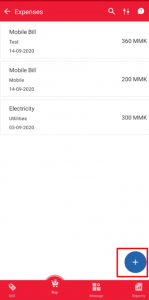 |
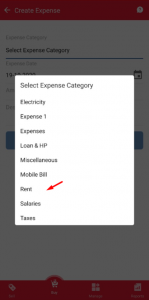 |
 |
|
Step 4 – Expense detail |
Step 5 – Click filter to search |
Step 6 – Choose expense category |
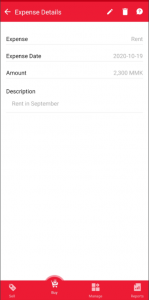 |
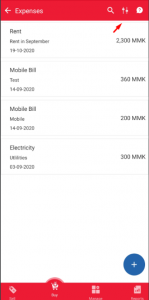 |
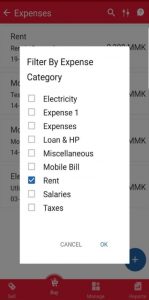 |
Invoices is one of the most important menus in Kiutify application. This menu help you sell products like in POS menu: sell multi products, enter discounts (if any) by creating new invoices for your customers. But the best thing in this menu is you can let your customer pay partially instead of immediate payment in POS. You also can choose payment methods, payment terms when record invoices.
After recording a new invoice, you can save then register payment or save and sending an pdf invoice version for your customer by email
This app provides Invoices tab in Sale Transactions menu let you follow how much your customers paid, due amount in each invoice
You also can adjust your invoices if record wrong. Invoice status must be submitted. The invoice number will be kept the same after you adjust but the total amount and inventory will be updated.
|
Step 1 – Go to Create Invoices |
Step 2 – Choose customer |
Step 3 – Enter quantity, discount |
 |
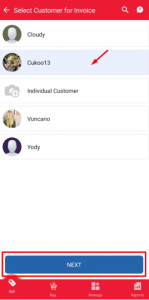 |
 |
|
Step 4 – Confirm to proceed |
Step 5 – Choose payment term |
Step 6 – Review invoice |
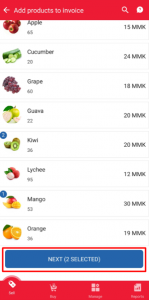 |
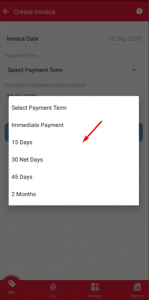 |
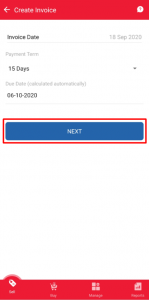 |
|
Step 7 – Save invoice |
Step 8 – Pay now or pay later |
Step 9 – Enter paid amount, journal |
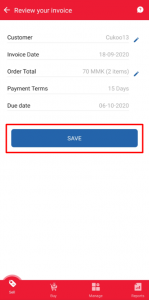 |
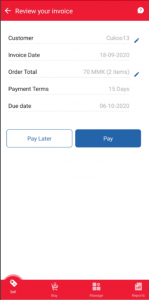 |
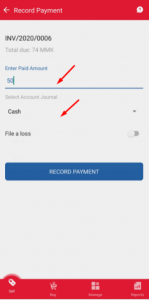 |
|
● Users can pay partially or pay full amount by enter amount in box |
||
|
Step 10 – Confirm to proceed |
Step 11 – Payment Recorded |
|
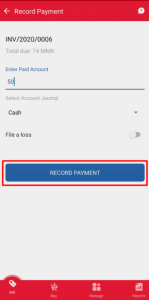 |
|
|
|
● If users want to write off for a partially paid invoice, they can turn on “File as loss” as steps below: |
||
|
Step 1 – Record payment |
Step 2 – Choose “File as loss” |
Step 3 – Invoice status updated |
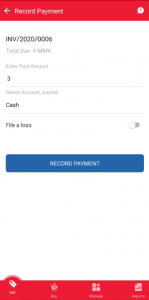 |
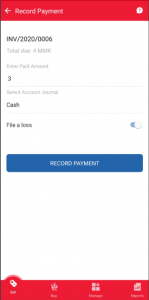 |
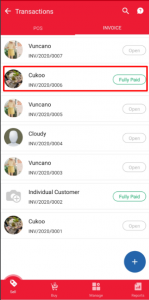 |
|
Step 1 – Choose POS order |
Step 2 – Detail order |
|
 |
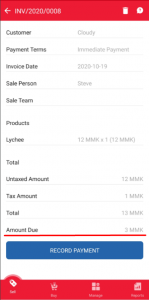 |
|
|
Note that “Paid partially” Invoice and “Paid” Invoice can not adjust. |
||
|
Step 1 – Choose Invoice |
Step 2 – Click on adjust invoice |
Step 3 – Tap to edit quantity |
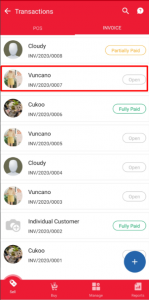 |
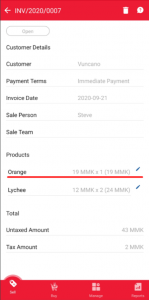 |
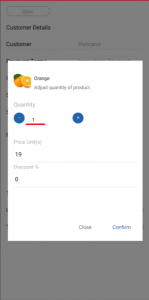 |
|
Step 4 – Edit quantity |
Step 5 – Click Confirm to save |
Step 6 – Invoice updated |
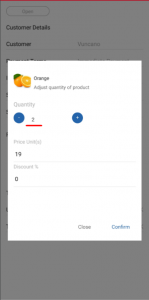 |
 |
 |